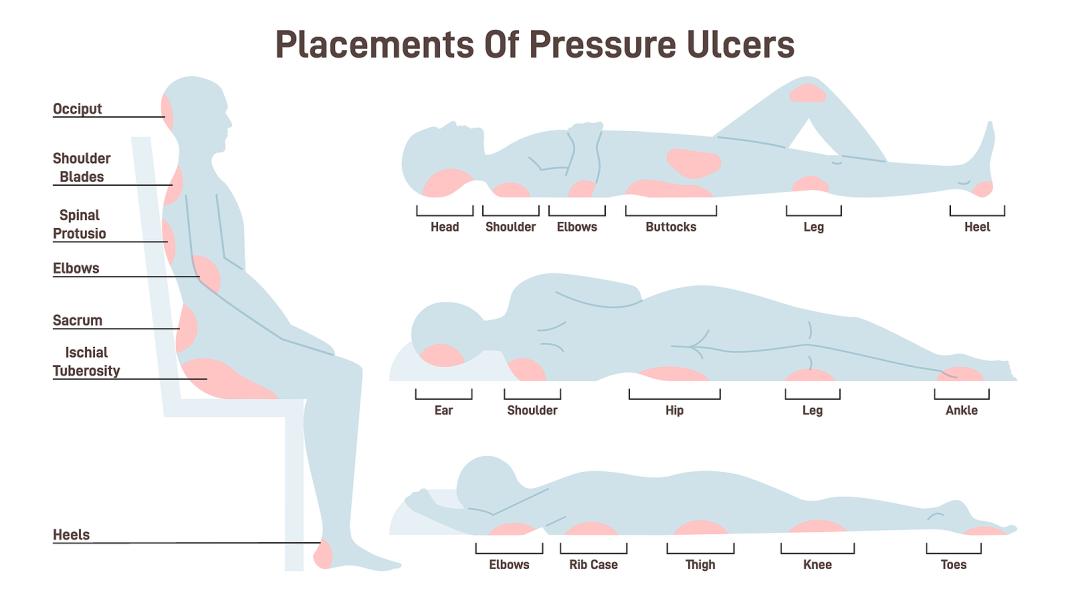No one knows precisely how many Americans develop a pressure ulcer each year.
A 1999 study estimated that 1.6 million patients acquired a pressure ulcer as a result of hospitalization, which means that the incidence in the United States is at least 2 million annually when long-term care is added. Pressure ulcers increase a hospital stay by a factor of five and cost from $2,000 to $70,000 to heal at a cost to the nation of $11 billion.
Pressure ulcers are an area of localized damage to the skin and underlying tissue caused by unrelieved pressure. When pressure is applied to the skin over a bony prominence, the pressure is transmitted in a narrowing cone down to the muscle layer and ischemia occurs, which leads to muscle necrosis. The greatest damage is usually deep within the tissue next to the bone, thereby making the outward appearance of a pressure ulcer deceptive. This phenomenon is termed deep tissue injury. Certain pressure ulcers can also be caused by the action of shear forces acting in concert with pressure on fragile skin.
The management of these wounds requires a comprehensive approach to treatment. This approach is proven to heal these ulcerations quickly and reduce the incidence of infection and recurrence. Thus a comprehensive approach substantially reduces the cost burden to those individuals with pressure ulcers.

